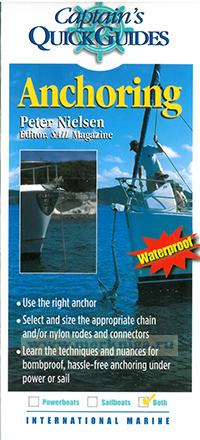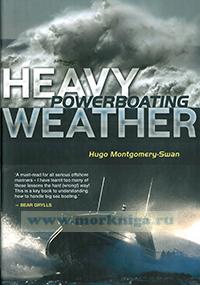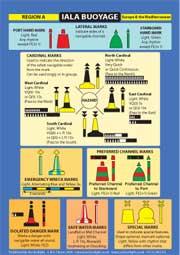Capitan's quick guide: Anchoring
Which Anchor?
Anchors come in great variety. The anchor you might use for a short, sheltered stop is not necessarily the one to use for anchoring overnight. Coastal cruising sailors and powerboaters should carry two anchors of different designs — a primary anchor that you trust to hold your boat in a boisterous anchorage, and a secondary to deploy as a backup when the primary won't do the job alone. Many boats carry a third, lighter anchor to use as a fairweather "lunch hook" and for other occasional duties. Here's a quick rundown of types:
Plow Anchor and Scoop Anchor
CQR
Holds best in: Firm sand, thick mud, rock, coral, weed
Not so good in: Silt, sloppy mud, gravel
Stowability: Usually stows well on a bow roller; hard to stow belowdecks
Comments: Excellent all-around anchor; the most common primary anchor on sailboats with bow rollers. Designed to bury deeply and provide high holding power in firm substrates. Tends to reset itself quickly when broken out or after a change in the direction of pull. Awkward to stow except on a bow roller, so not often found on small cruising sailboats or powerboats. Most will orient themselves point down when hauled up on a bow roller, making them self-stowing as well as self-launching. Scoop anchors differ from plows in their concave upper blade surface, which enhances their holding power. Popular examples are:
CQR. Hinged-shank plow. One of the oldest anchors still in general use. Immensely popular. Beware poorly made copies. Best if heavier for a given size of boat than most other plows.
Delta. Fixed-shank plow. Valued by sailors and power-boaters for rapid setting, good holding power, and reasonable cost. Awkward to stow and won't fit some bow rollers.
HydroBubble. This plow has a plastic float to ensure that the blade meets the bottom at the desired angle. Sets quickly, holds well, and breaks down for storage, but creates an awkward fit in many bow rollers.
Spade. This scoop anchor has gained wide acceptance among cruising sailors in recent years. Concave blade and weighted tip provide excellent penetrating and holding power in most bottoms. Can be dismantled for storage.
Rocna and Manson Supreme. These new scoops have a roll bar rather than a weighted tip to orient the blade's sharp point into the seabed. Set quickly. Expensive and awkward to stow (except in a bow roller).
Claw Anchor
Bruce
Holds best in: Rock, weed, coral, sand
Not so good in: Soft mud, soft sand
Stowability: Awkward to stow except on bow roller
Comments: Like a plow, a good all-around choice as primary or secondary anchor on any boat over 30 to 35 feet. For best substrate penetration, heavier is better. Popular examples are:
Bruce. Rivals the CQR among sailors' longtime favorites. Beware poorly made copies.
Pivoting-Fluke Anchor
Danforth
Holds best in: Sand, soft mud
Not so good in: Rock, grass, clay, weed
Stowability: Light and easy to stow on deck or in a locker
Comments: Features a pair of blades set at right angles to the shank and hinged to penetrate the bottom whichever way the anchor lands. Unexcelled holding-to-weight ratio once dug in, but can be slow to dig in or to reset after tripping. Sometimes prone to trapping lumps of weed or rocks between blade and shank, rendering it useless. Typically the primary anchor on a boat of less than 30 feet without bow-roller stowage. Ideal on larger boats for stem anchor, lunch hook, or kedging when aground.
Издание на английском языке. Изложена самая необходимая информация по постановке и снятию яхты с якоря, якорям, якорным операциям.
Преставляет собой сложенный вчетверо буклет, запаяный в пленку, влагозащищенный, предназначенный для хранения на борту яхты или катера.
Размер буклета в сложенном виде 10,5х23 см. В развернутом 45 х 46 см.

 Heavy Weather Powerboating
Heavy Weather Powerboating  Buoyage / Distress Signals - Cockpit Card
Buoyage / Distress Signals - Cockpit Card  Рейсы простого моряка
Рейсы простого моряка